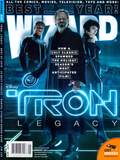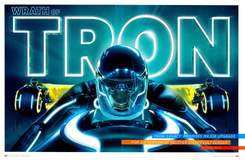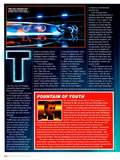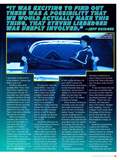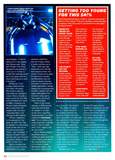The first time Jeff Bridges visited the data stream, the future looked bright.
Extremely bright, because of the huge banks of lights required on the set of 1982's “Tron” to keep the costumes free of shadows. The actors sported ridiculous-looking white outfits featuring circuit lines drawn on them with decidedly low-tech Sharpie markers.
“The first one we shot in 7OMM black and white film, and then that [print] was sent to Korea where these ladies hand-tinted all the glow-lines," Bridges tells Wizard 29 years later.
His co-star Bruce Boxleitner, Tron himself, remembers traipsing around with a Frisbee taped to his back and wondering how this eerily-lit set was going to pass for a virtual world inside a computer where programmer Kevin Flynn (Bridges) leads a charge to overthrow the evil Master Control program.
“l love telling about this because it seems like the Stone Age,” Boxleitner says. “But that was groundbreaking at the moment, because we said, ‚Are you sure this is going to work?’ And [writer-director Steven Lisberger] said, “Don’t worry, there's this thing, this “computer animation’ that’s going to happen, and it's going to make it all work."
It did. But moviegoers in 1982 weren't completely ready for all that new-fangled “computer animation.” Grossing $33 million, “Tron" didn't make it into the same galaxy as “Star Wars." Audiences didn't seem to fully grasp the concepts of virtual avatars and social networks after all. Al Gore hadn't completely invented the
Internet yet.
Fast-forward three decades and the franchise is getting a hell of an upgrade. Disney’s “Tron: Legacy” hits theaters on Dec. 17 in eye-popping 3-D. New director Joseph Kosinksi has made everything about the long-awaited sequel look grander than the original: The 2.0 Light Cycles are light years ahead of the originals; the Recognizers are now so advanced, they’re barely recognizable, and the disc battles to the death end with a loser shattering into millions of pixel-like cubes instead of a lame blip. But the filmmakers didn’t want to completely rewrite the source code.
[…]
